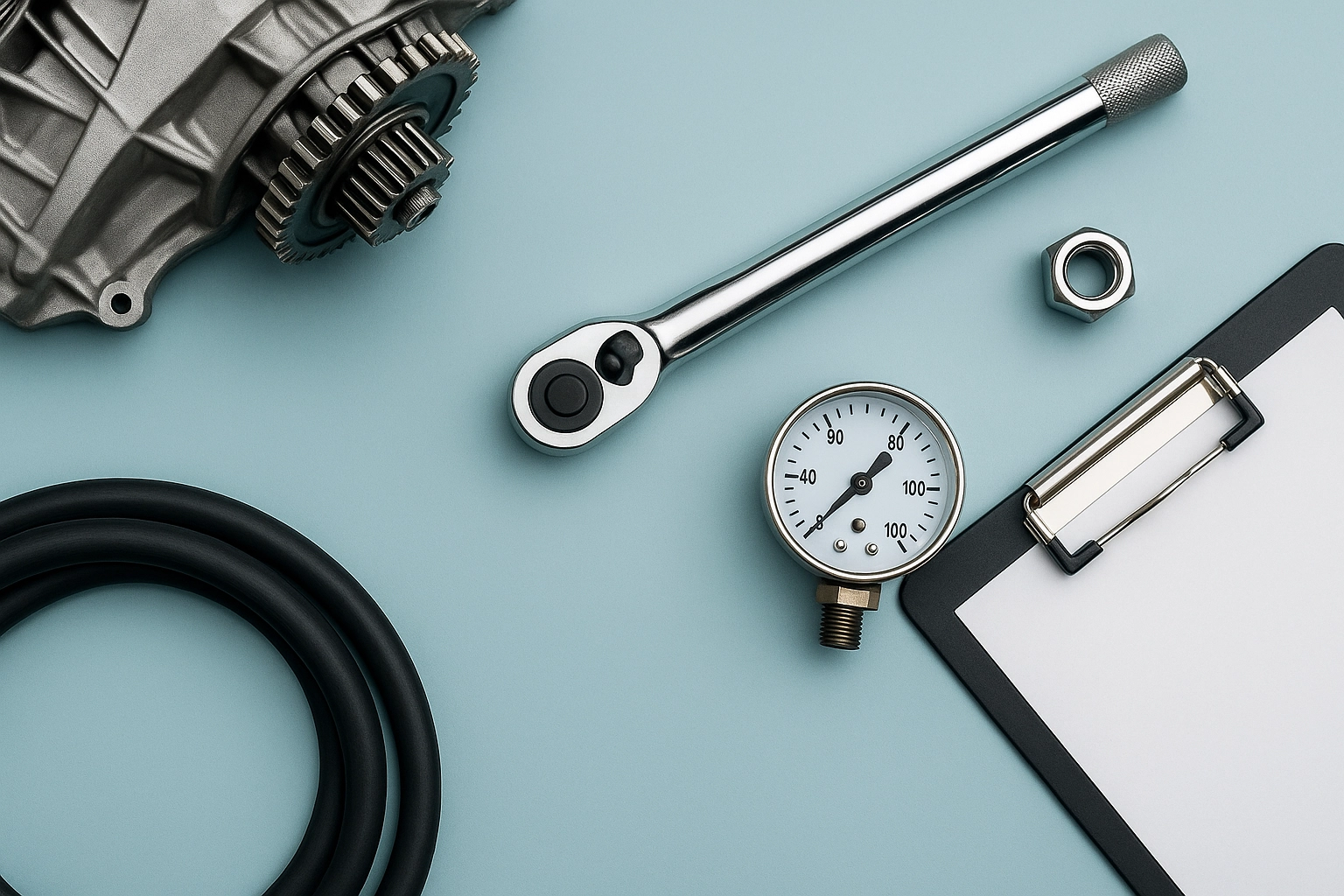ISO 18145 Automotive Cooling System Durability Test
The ISO 18145:2016 standard outlines a method for testing the durability of automotive cooling systems. This test is critical in ensuring that the cooling system can withstand long-term operational conditions, thereby enhancing vehicle reliability and longevity.
The test involves subjecting the cooling system to various environmental stresses such as temperature changes, humidity levels, and fluctuating pressure conditions. The goal is to simulate real-world driving conditions over an extended period. This durability testing helps manufacturers identify potential weaknesses in design or manufacturing processes that could lead to failures under operational stress.
The ISO 18145 test protocol specifies the use of a climate chamber to control temperature and humidity levels, along with pressure vessels to simulate engine operating conditions. The cooling system is subjected to these environmental stresses for a predetermined number of cycles or hours, depending on the specific requirements outlined in the standard.
Durability testing is particularly important because it ensures that the cooling system can handle the rigors of everyday use without compromising safety or performance. This test helps manufacturers meet regulatory standards and improve overall product quality by identifying any issues early in the development process.
The ISO 18145 standard provides detailed instructions on how to prepare specimens for testing, including cleaning procedures and assembly guidelines. Proper specimen preparation is crucial for accurate test results as it ensures that all components are in optimal condition before being subjected to stress.
During the test, various parameters must be monitored closely to ensure accurate data collection. These include temperature variations, humidity levels, pressure changes within the cooling system, and fluid flow rates. Data logging equipment is used to record these measurements throughout the testing process. This information is essential for analyzing the performance of the cooling system under different conditions.
The test results are typically reported in terms of pass/fail criteria based on specified limits defined by ISO 18145. If the cooling system passes this durability test, it indicates that it meets stringent quality control standards and is suitable for use in automobiles. Conversely, if any part fails during testing, further investigation into design flaws or manufacturing issues may be necessary.
Understanding the importance of durability tests like ISO 18145 helps stakeholders appreciate why they are crucial for maintaining high levels of vehicle reliability. By adhering to these standards, manufacturers can produce safer and more reliable vehicles that meet regulatory requirements while also enhancing customer satisfaction through improved product quality.
- Climate chamber for temperature control
- Pressure vessel for simulating engine conditions
Applied Standards
The ISO 18145:2016 standard is widely recognized and applied across the automotive industry. It provides a robust framework for evaluating the durability of cooling systems in vehicles, ensuring that they can withstand various environmental stresses over time.
Manufacturers rely on this standard to validate their products before releasing them into the market. By adhering to ISO 18145 guidelines, companies demonstrate commitment to producing reliable and safe vehicles that meet international standards.
The application of ISO 18145 goes beyond just compliance; it also serves as a benchmark for excellence in quality assurance practices within the industry. When selecting labs or testing facilities, customers should look for those accredited according to this standard to ensure consistent results across different organizations.
Adhering to internationally recognized standards like ISO 18145 not only enhances credibility but also fosters trust among consumers who value safety and performance when choosing automotive products. Moreover, it supports global trade by facilitating interoperability between various markets that have adopted similar regulations.
Scope and Methodology
The scope of the ISO 18145:2016 standard covers all aspects related to testing automotive cooling systems for durability under specified conditions. The methodology involves subjecting the cooling system to various environmental stresses, including temperature variations, humidity levels, and fluctuating pressure conditions.
During the test, the cooling system is placed inside a climate chamber where controlled temperature and humidity are maintained throughout the duration of the experiment. Additionally, pressure vessels simulate engine operating conditions by exerting specific pressures on the cooling system components.
The test protocol specifies detailed procedures for preparing specimens prior to testing, ensuring that all parts are clean and properly assembled according to manufacturer specifications. This preparation step is critical because it ensures accurate measurements during the actual testing process.
While monitoring various parameters such as temperature changes, humidity levels, pressure fluctuations within the cooling system, and fluid flow rates, data logging equipment records these values continuously throughout the entire test period. These recorded data points provide valuable insights into how well the cooling system performs under different conditions.
The results of ISO 18145 testing are evaluated against predefined limits outlined in the standard to determine whether or not the tested cooling systems meet acceptance criteria. Passing this durability test indicates that the cooling system has demonstrated sufficient resistance to environmental stresses, making it suitable for use in vehicles.
In summary, adhering strictly to ISO 18145 ensures consistent and reliable testing procedures across different laboratories, thereby promoting confidence among stakeholders regarding the quality of tested products.
Industry Applications
- Automotive manufacturing
- R&D for new cooling system designs
- Supplier quality assurance programs
The ISO 18145:2016 standard finds extensive application in automotive manufacturing processes. Manufacturers use this test to evaluate the durability of their cooling systems before incorporating them into vehicles.
R&D departments often conduct these tests as part of ongoing efforts to improve existing designs or develop entirely new concepts for more efficient and reliable cooling solutions. By simulating real-world operating conditions, they can identify potential weaknesses early in the development cycle.
Supplier quality assurance programs also benefit greatly from ISO 18145 testing. Suppliers may undergo rigorous evaluation by having their products tested according to this standard to ensure consistent performance and reliability across multiple projects.
In addition, regulatory bodies sometimes require compliance with certain standards like ISO 18145 when approving new models or modifications. This ensures that all vehicles meet minimum safety and quality requirements set forth internationally.





